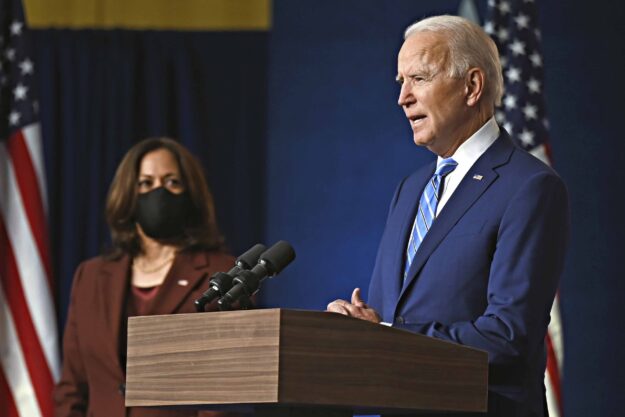Immigration policies go hand in hand with drug trafficking issues. This is due to the fact that many immigration policies have been or are instated with the goal to decrease or bring drug trafficking across the border to a halt. For example, under President Donald Trump’s rule in office, he proposed the policy of building a wall as a solution to stop and prevent immigration, and therefore stop drug trafficking. However, were his motives really focused on the drug trafficking issue, or was he more interested in preventing people from other countries from migrating here?

A concrete barrier or a wall along the US-Mexico border would not dramatically reduce drug flows into the US. Although a physical barrier, such as a see-through metal structure, is largely meaningless in terms of impacting drug flows to the United States, it does come with substantial financial costs and unintended consequences. Even if the goal were to combat drug smuggling, the money spent on a border wall might be better spent on other anti-narcotics measures including improving legal ports of entry along the border and supporting the US Coast Guard (Felbab-Brown).
If we were to build a wall, counter-measures of drug traffickers would likely be taken. These counter measures should be considered, and then a decision on whether or not the wall would be sufficient could be made. Some examples of how smugglers could counteract a wall include using tunnels, airborne and sea smuggling, legal ports of entry, and postal and mail services (Felbab Brown).
Smugglers’ obvious answer to a border barrier is tunnels. Drug traffickers are now using tunnels to bring narcotics into the US, a tactic invented by Mexico’s most infamous drug trafficker, Joaquin “El Chapo” Guzmán, who was on trial in the US.
Drones and catapults are two other smuggling techniques that are increasingly being used. Drones’ payload, or the amount of cargo they can carry, is currently restricted, so they are not an effective drug smuggling tool for most drugs. However, payload capacities will increase over time, making drug smuggling easier.
Another tried and true approach is smuggling drugs by sea. Drug-carrying vessels have been known to land off the coast of the United States. If the land boundary between the United States and Mexico were to be tightened, the trend of smuggling further north into California’s coast would only expand. Cutting the US Coast Guard’s budget, as the Trump administration suggested at one point to pay for the wall, is counterproductive for this reason—and, more significantly, to deter much more serious terrorist attacks in US ports. The United States Coast Guard is an integral part of border defense in the United States, fighting a range of dangerous threats such as terrorism and illegal fishing.
Hard drugs smuggled into the United States through the US-Mexican border are smuggled in through the 52 legal ports of entry on the border, which must process millions of individuals, vehicles, trucks, and trains each week, according to the US Drug Enforcement Administration. Since 2006, traffickers have concealed their illegal cargo in hidden and increasingly sophisticated special compartments in cars or under legal goods in trailer trucks, with a total of 5,042,062 crossing the US-Mexico border annually, or around 13,800 every day (Felbab-Brown).
Drugs with a high potency to weight ratio, such as synthetic drugs like fentanyl, can also be imported directly from manufacturers to the United States. Indeed, most of the lethal fentanyl and its analogues are imported from China to the United States in this manner. A wall would have little impact on drug traffic because they never reach the land boundary between the United States and Mexico.
That was Trump’s solution, but what is newly elected President Joe Biden’s take on drug trafficking and immigration policies?
Biden is planning to repeal and undo a lot of Trump’s set immigration policies, in hopes to create a safer environment and process for migrants. However, how will this affect drug trafficking issues?

“Senior Research Fellow Lora Ries, an immigration expert with the conservative Heritage Foundation and former Department of Homeland Security acting deputy chief of staff, said recently that, “[Biden’s] executive orders are designed to do one thing: end policies that have helped halt the uncontrolled flow of migrants to the border, undermine the rule of law, and usher in a new era where the U.S. government becomes an active participant in facilitating illegal immigration. We can certainly expect to see more caravans and a rush of illegal immigration that will overwhelm our border and immigration system.” (Carter).
Biden praises the executive actions on family separation, border protection, and legal immigration. Reversing President Trump’s stringent policies, according to his administration, is more humane and positive for national security in the United States. However, because Biden signed these nine executive orders on immigration so quickly, there was no time to evaluate what worked and what didn’t.
According to a Fox News report, allowing migrants to more easily cross the border again creates more safety issues for these migrants and continues to give drug cartels and smugglers control. Migrants wanting to get to the U.S. will pay all that they have to drug cartels to be aided in or allowed to cross the border, and if they are unable to pay they can become enslaved to the cartel, in the form of smugglers, prostitutes, etc. (Carter).
Actions need to be taken to decrease drug trafficking rates in the U.S., however, a balance needs to be found between drug trafficking and immigration laws so that people on both ends are experiencing the least amount of danger.
https://www.brookings.edu/testimonies/border-security-and-comprehensive-immigration-reform/
https://www.foxnews.com/opinion/biden-immigration-policy-human-traffickers-drug-cartels-sara-carter


